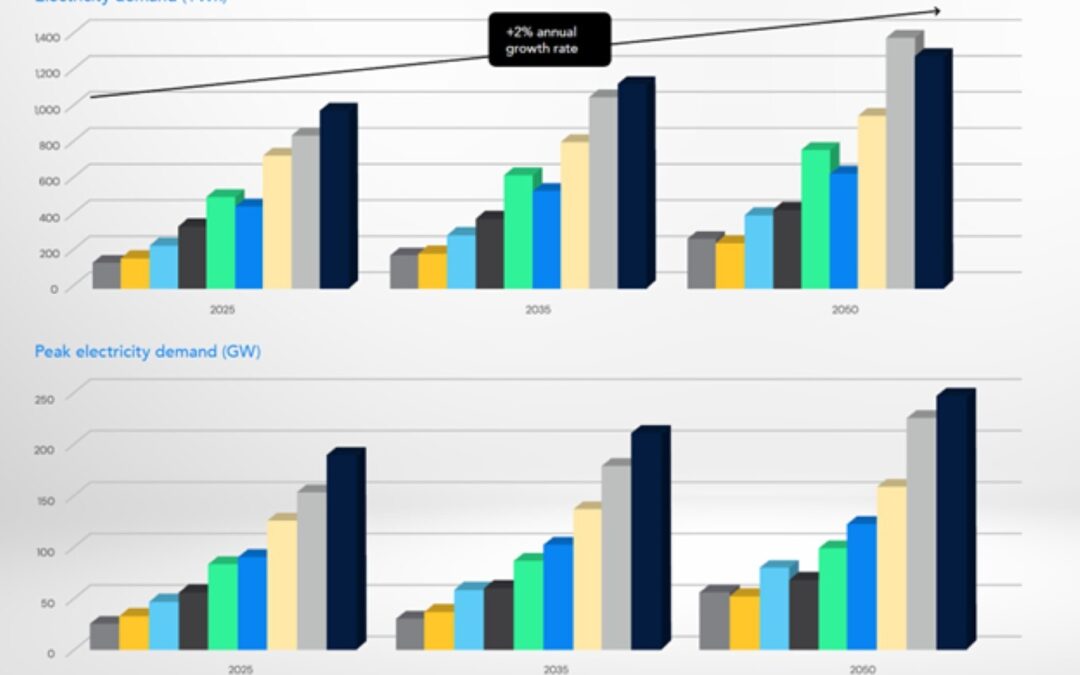The U.S. is seeing growth in electricity demand for the first time in a decade thanks to new pressures like data centers and artificial intelligence. ICF, a strategic consulting firm, expects a nine percent surge in electricity demand by 2028 and 18 percent by 2033, according to a new report.
Summer peak demand, or the highest level of demand for electricity during the summer, is projected to increase five percent by 2028 and 11 percent by 2033. Utilities must ensure they have enough capacity to meet peak demand, which means having more electricity than needed at other times and, if the grid is incorporating wind and solar energy, overbuilding of backup systems to compensate when the wind isn’t blowing, and the sun isn’t shining.
Demand is likely to increase most in PJM, but MISO is expected to see the third-highest increase in electricity demand.

What does that mean for the ratepayer? The report notes: “The cost many utilities pay for electricity could increase by an average of 19% by 2028 due to the demand increase.” Expect those costs to be reflected into the costs that ratepayers pay for electricity.

